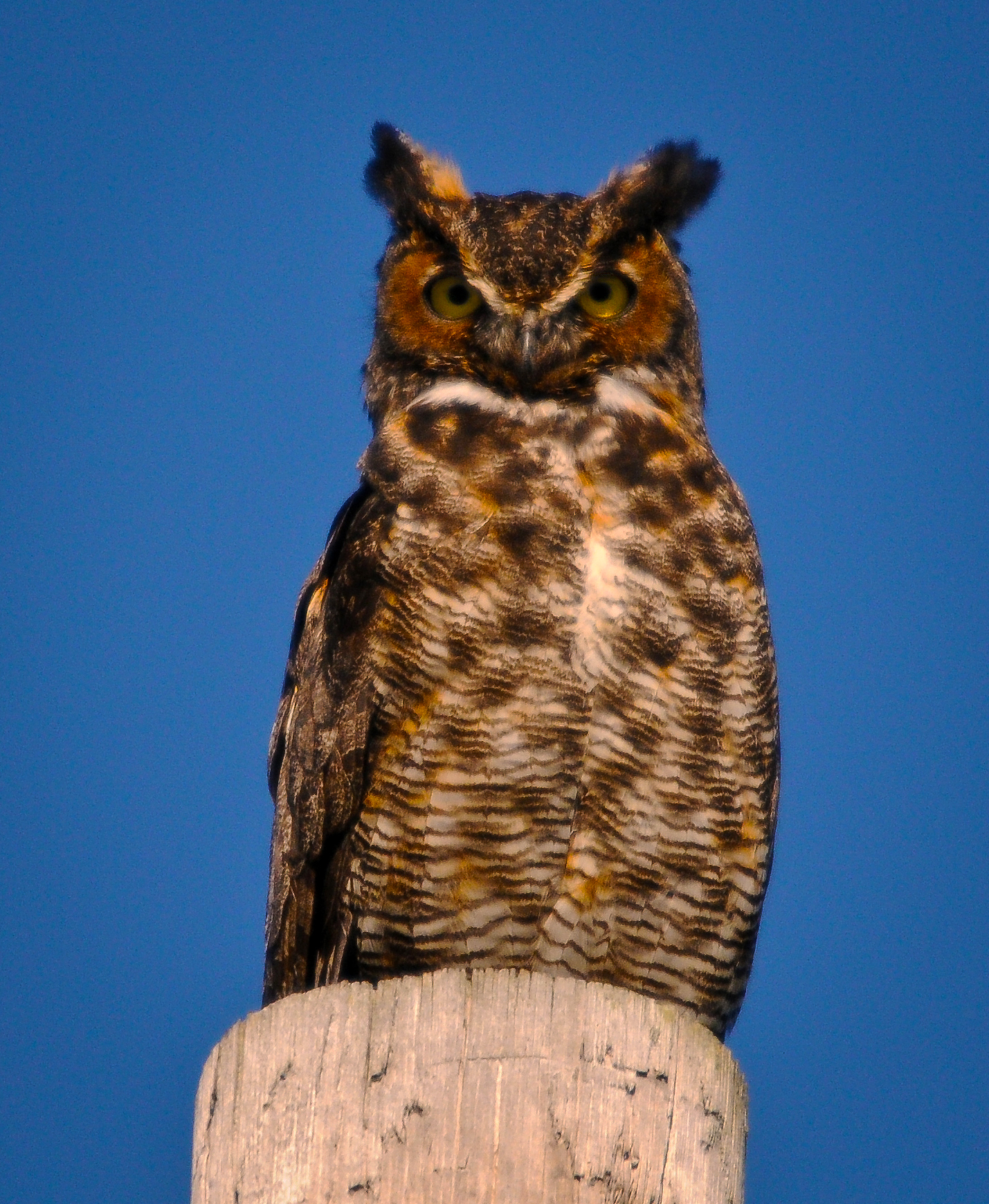Photo by Bob Schifo
In October and November, you might hear the hoo-hoo-hoooo-hoo-hoo and the response of its mate or an intruder somewhere in Loch Lomond. That five-syllable hoot, with the middle vocalization being the longest, belongs to the great horned owl. This is a common species, though not easily seen because it’s active in the night. Nearly every fall, we hear the hooting calls of great horned owls—and there’s a reason they’re more vocal this time of year.
They are courting.
It’s fun when neighbors stop by to tell us about the owl they heard or saw one evening. Once we knocked on our neighbor’s door at night and invited them to listen to the owls and look for one that was perched upon our Norway spruce. We stood far back and looked with binoculars.
When you see a great horned owl take off with its nearly five-foot wide wing span, it’s bewildering that you don’t hear it, even if it flies close by you. That’s because many owl species have serrated edges on their feathers that make flight noiseless.
Birds of prey, like great horned owls, help keep the population of small mammals in check, so it’s nice to know they’re around even if you don’t always see or hear them. Great horned owls can take prey of up to about five pounds. They typically don’t go after dogs and cats, but it’s best if you know a great horned owl is around to not leave your pets unattended or chained, especially at night. Though great horned owls can see during the day, they see exceptionally well at night when seeking prey such as a mouse, opossum, skunk, or other mammal. They have many more rod-shaped cells in their eyes compared with human. The adaptation enables them to be highly sensitive to light and movement, so never shine a flashlight on its eyes—that could blind it. You can direct a flashlight to its lower body, but be careful.
Many owl species also have facial disks—a group of feathers around the eyes that direct the sound to their ears. And no, the ears aren’t those tufts atop the great horned owl’s head. The ears are actually two slits on the sides of the head. Those tufts, or horns, are likely used for communication or camouflage.
Great horned owls live throughout North America and adapt to different types of habitats. But they need to find a big tree with an old squirrel or hawk nest or a large cavity in the tree, and it needs to be near a field where they can hunt at night. By December or January, the female, who is larger than the male with a higher-pitched hoot, will be sitting in an old squirrel or hawk nest she and her mate chose for their new home. Even as the icy snow falls on her feathered head, the female will remain there incubating the eggs. The owls get quiet in winter, while the eggs are being incubated—but after their young hatch, you may hear them screeching from a tree begging for food.
Native Americans who lived where we now live viewed the great horned owl as a symbol of wisdom, and that it possesses the knowledge of weather patterns and the afterlife of humans. To me, its presence reminds us of the many secrets of nature we sometimes get to enjoy at night.

